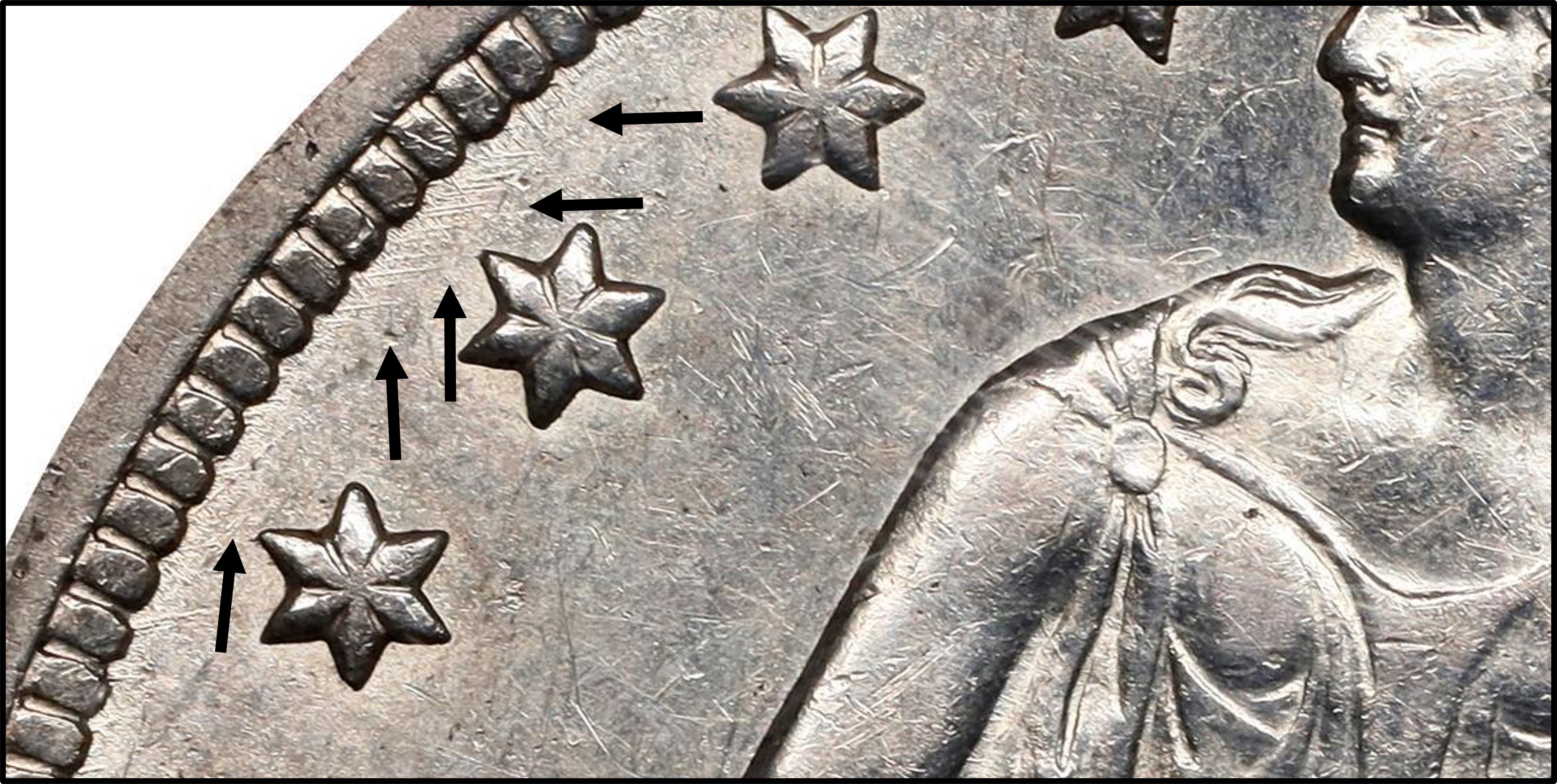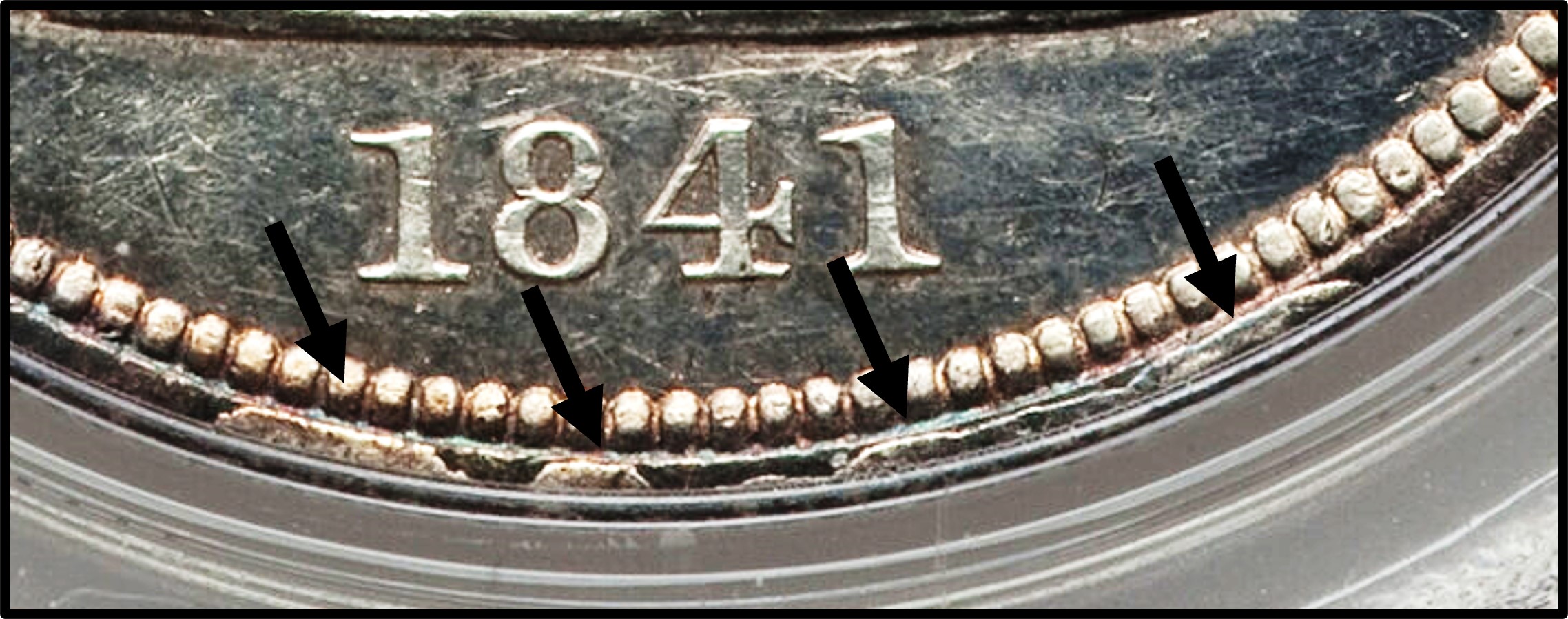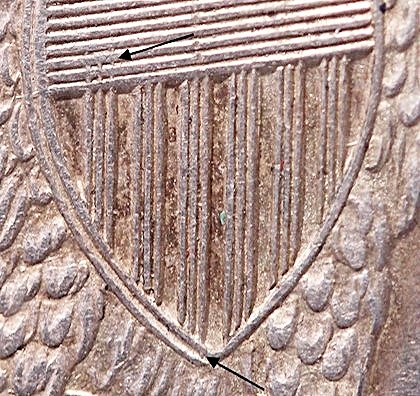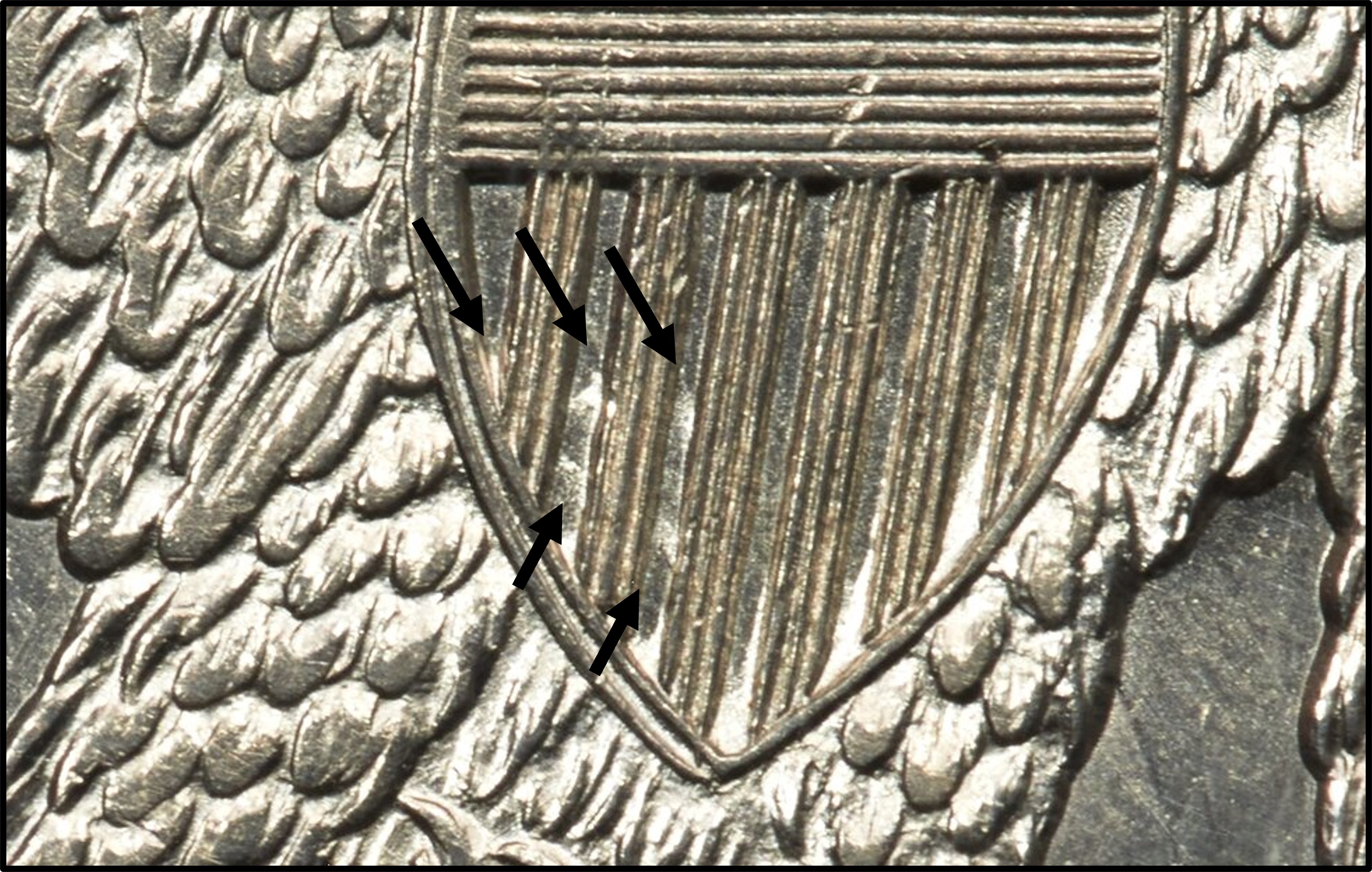|
|
Comments: This is the first use of Obverse 2 and the third and final use of Reverse 1840 A in 1841. Reverse 1840 A is transitional, first used for 1840 die marriage OC-1. |
Obverse 2 The photo below shows the Obverse 2 attribution grid.  1841 Obverse 2 attribution grid
 1841 Obverse 2 die lines
The photos which follow show the defining characteristics of the various die states.  1841 Obverse 2 - State a die lines from denticles around stars 4-5  1841 Obverse 2 - State b clash marks under right arm and die lines above the leg  1841 Obverse 2 - State d rim cuds |
Reverse 1840 A
Reverse 1840 A is transitional, first used in the 1840 OC-1 die marriage. Minor die markers are
visible on mid- to high-grade examples. The following photo shows these markers, extensions of
the vertical shield lines above and below.
 Reverse 1840 A die markers
The photo below shows the clash marks which define states b and c of Reverse 1840 A.  Reverse 1840 A clash marks |
